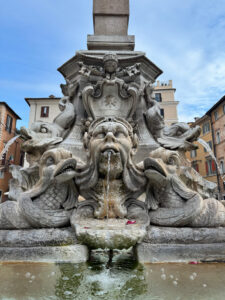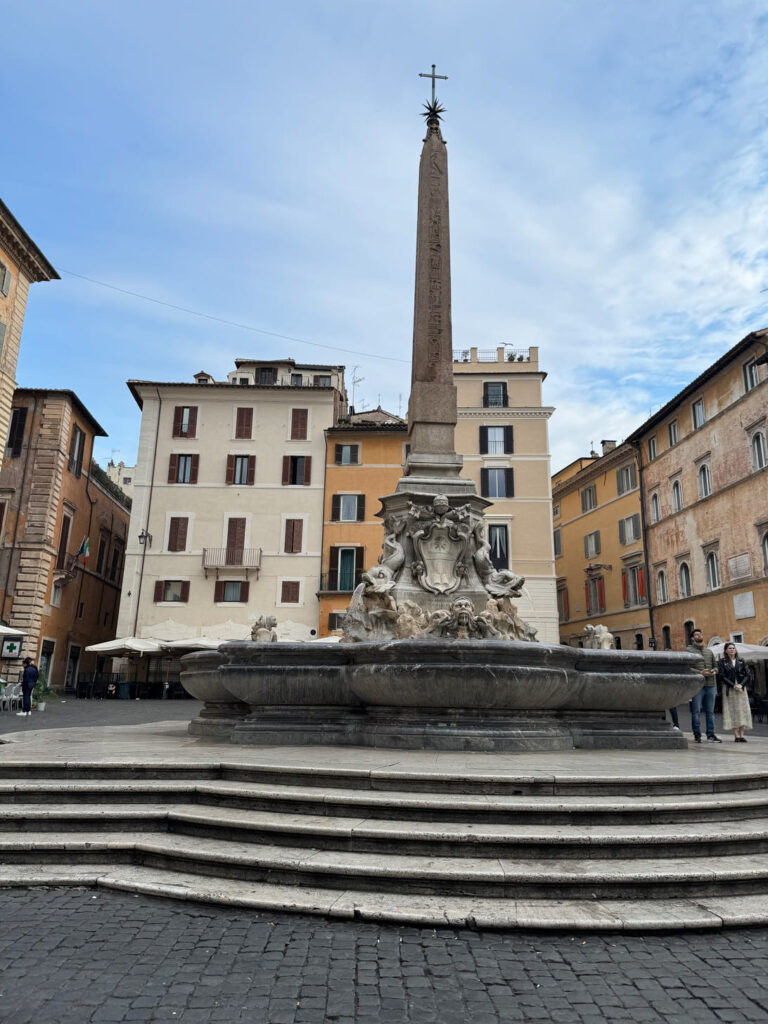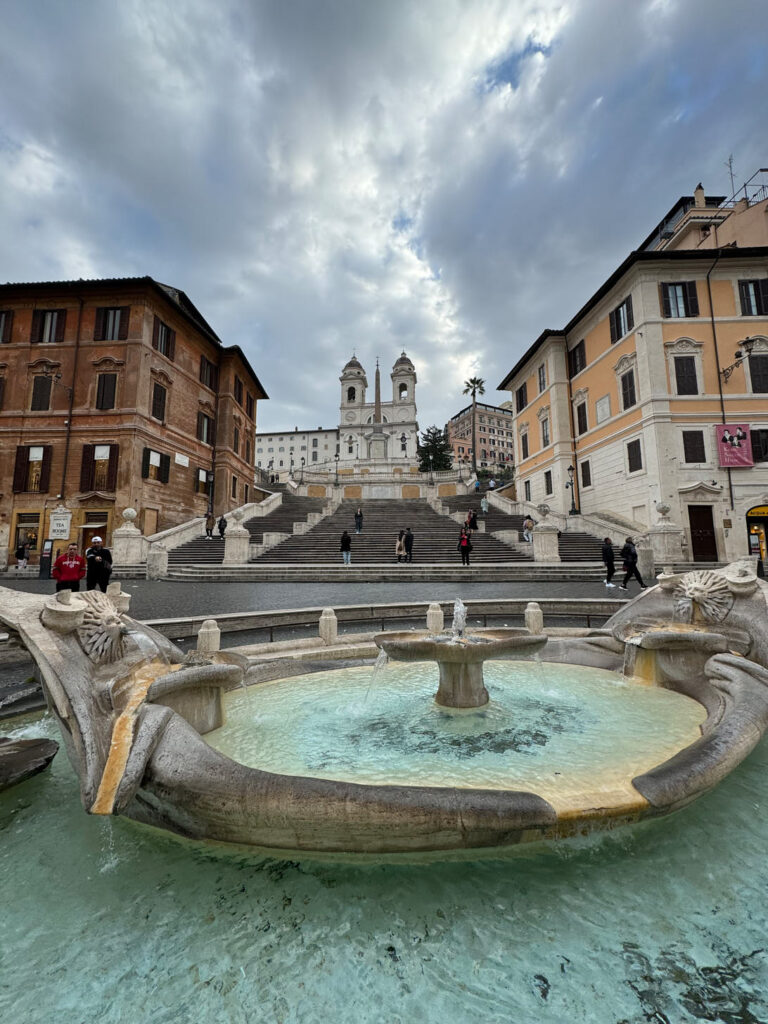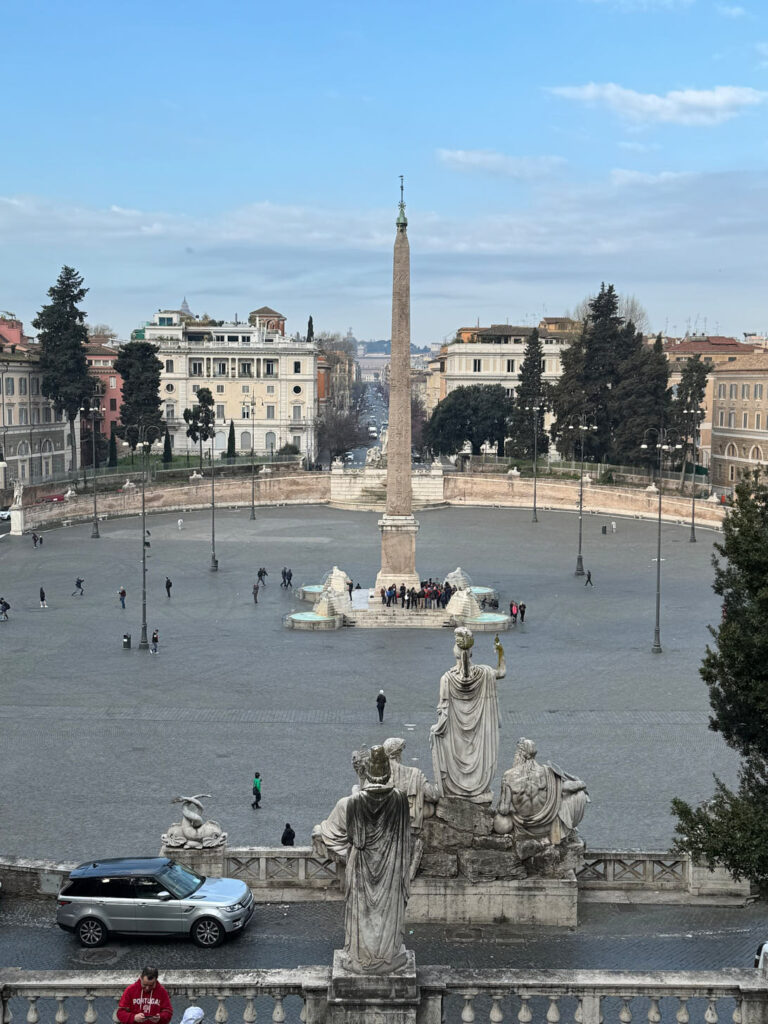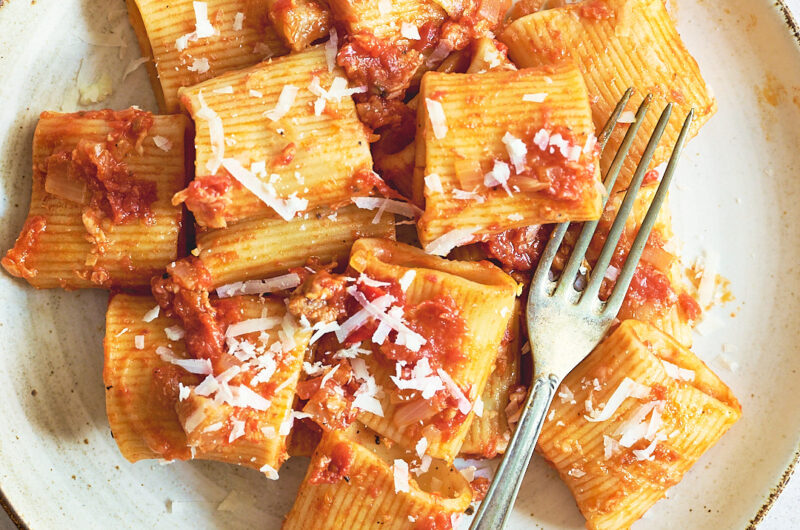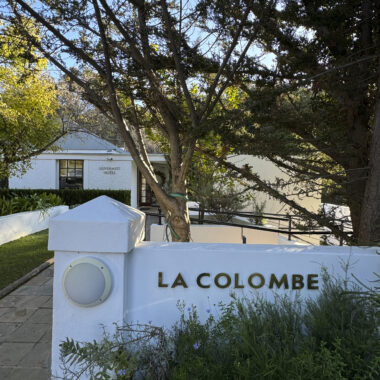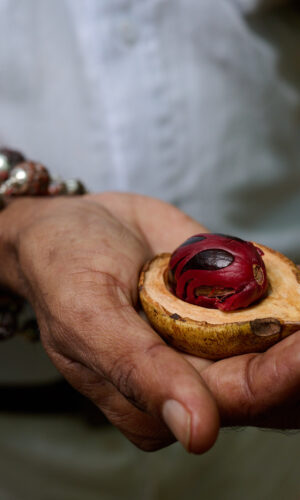On our recent trip to Italy, we had the pleasure of having lunch at Roscioli in Rome. I loved the atmosphere – eating lunch in a fully stocked salumeria with endless bottles of wine lining the walls is a pretty nice way to enjoy a Friday afternoon lunch! They did simple pasta dishes incredibly well, and their wine selection was excellent.
One of their classic Roman dishes was Amatriciana, which my husband loved. A tangy tomato based sauce with guanciale adding saltiness, a subtle hint of heat from chilli and rounded off with some pecorino to complete a well balanced sauce. So, naturally, we had to bring back some guanciale (cured pork cheek coated in black pepper) and Pecorino cheese to try and recreate the dish at home.
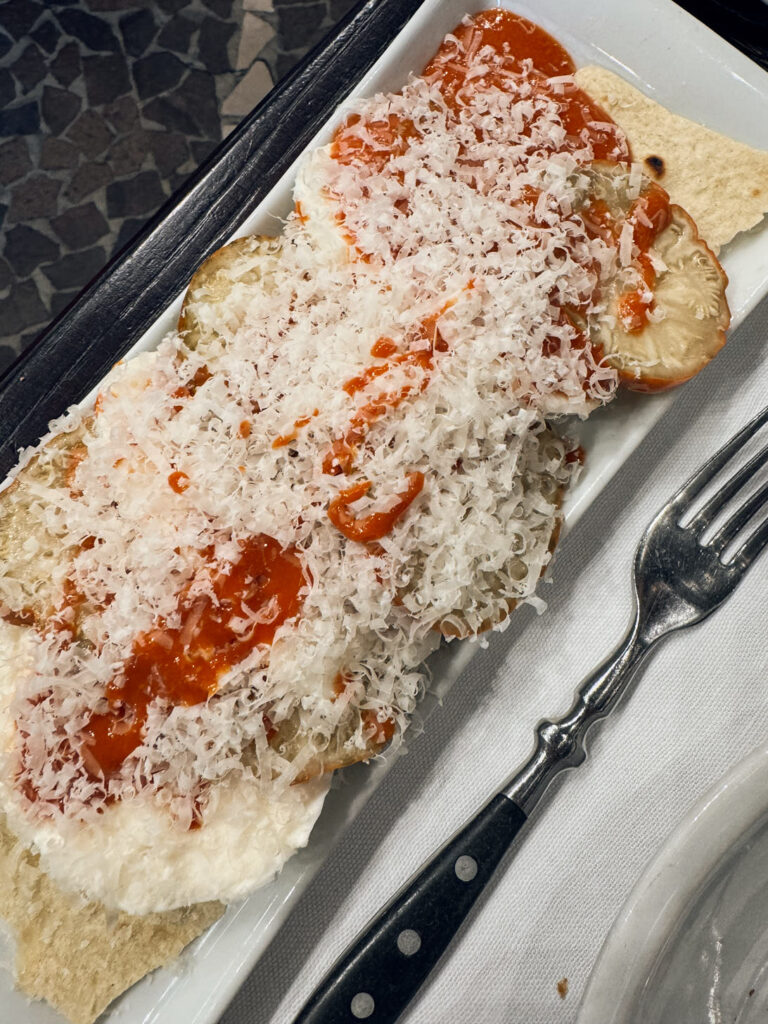
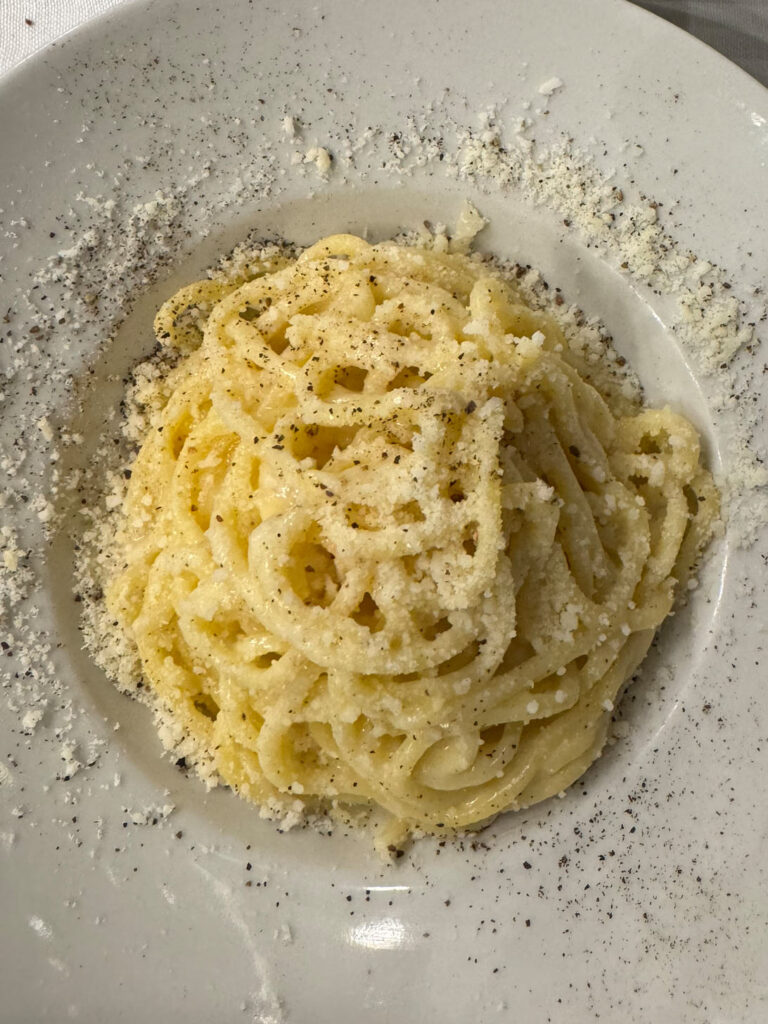
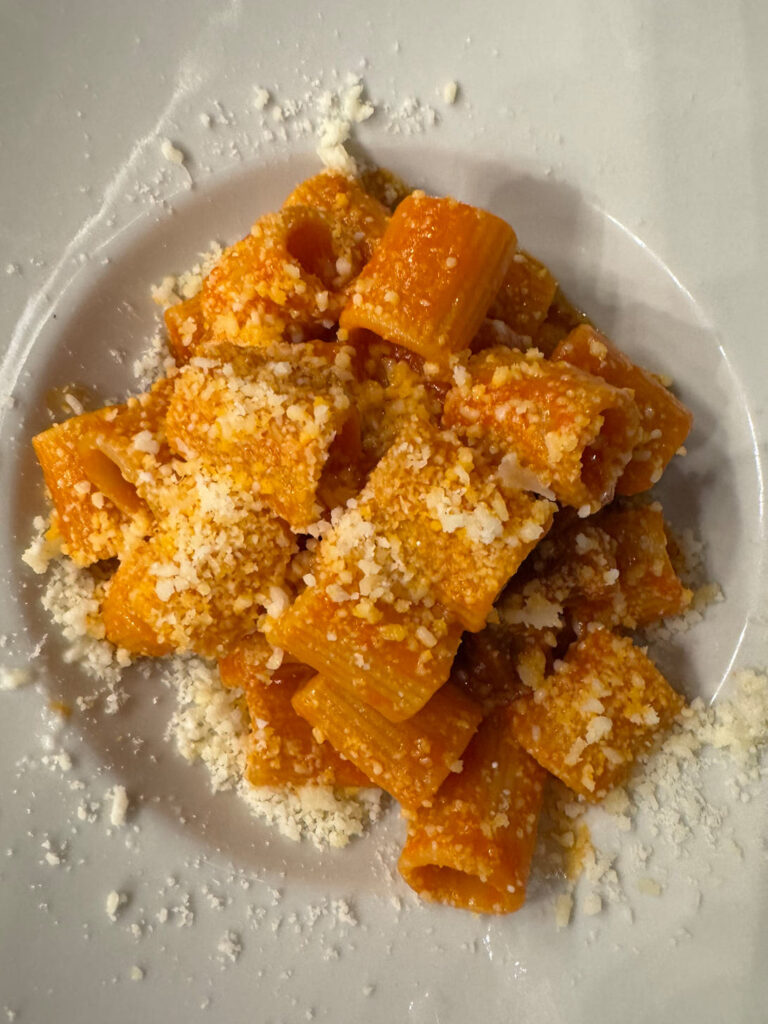
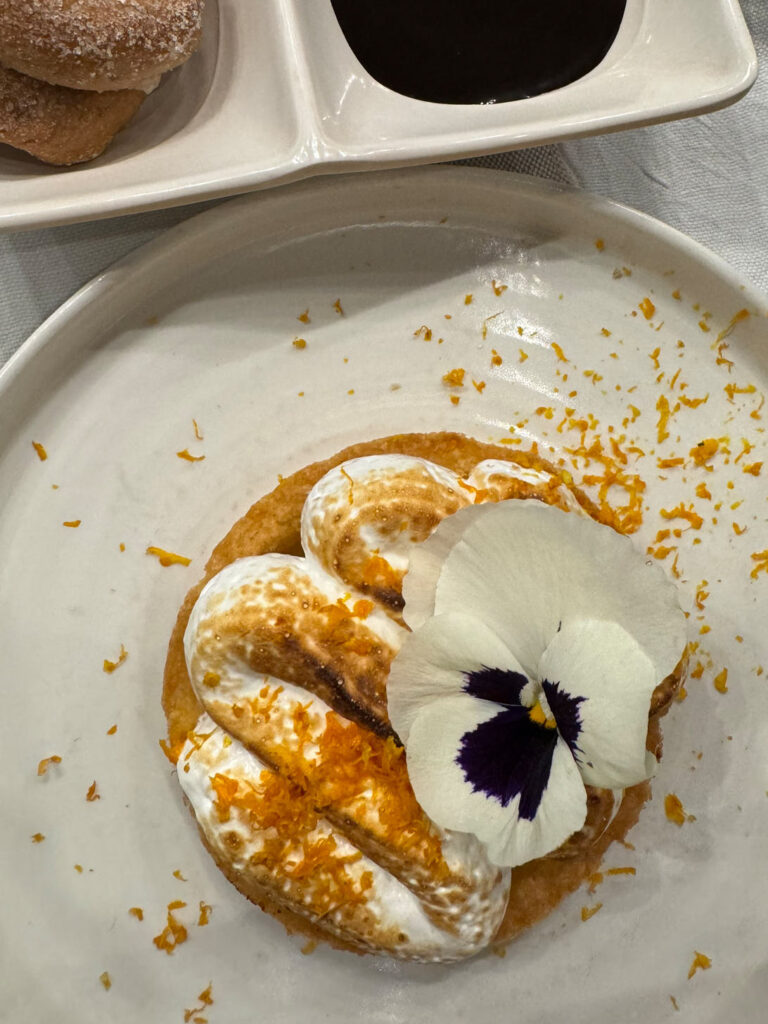
What I love most about Italian food is that often, the simplest dishes with just a few ingredients are the most delicious. Amatriciana exemplifies this perfectly. Originating from the town of Amatrice (in the mountainous province of Rieti, Lazio region), Amatriciana is now one of the most well known Roman pasta dishes, along with carbonara and cacio e pepe, my personal favorite!
(Fun fact! Amatriciana is actually one of only four Traditional Specialty Guaranteed (TSG) products from Italy, recognized by the EU.)
So, how to find the best recipe to make this dish at home? Since I find myself getting frustrated by the endless ads and scrolling required for online recipes, I’ve been making a conscious effort to go back to my tried-and-trusted recipe books. My go-to Italian recipe book has always been The Silver Spoon. It is an English translation (2005) of the original Italian version, Il cucchiaio d’argento, which was first printed in Italian in 1950. The other book I love is Gastronomy of Italy by Anna Del Conte (2001) which also contains a few short chapters on the development of Italian Gastronomy, the Culture of Italian food and the regions of Italy and an extensive A-Z list of ingredients. And of course Marcella Hazan’s -Essentials of Classic Italian Cooking.
I do enjoy the more modern books and modern twists on the classics, but sometimes you just need the basics! I have tweaked the recipe slightly, trying not to alter the taste profile too much. It worked well and definitely something I would make again! Perfect for a light lunch with a simple green salad.
*Amatriciana – Serves 4
Amatriciana
Course: Blog, MainCuisine: Italian4
servingsIngredients
3 Tbs Olive Oil100g guanciale or pancetta cut into batons or cubes
1 Shallot, finely chopped
1 can (400g) whole, peeled Italian tomatoes in puree, crushed lightly by hand
350g dried pasta (bucatini or spaghetti are traditionally used, but other types of pasta can be used as well.)
1 small red chilli, finely chopped (substitute chilli flakes if needed)
30g grated pecorino cheese for serving
Freshly ground black pepper
Directions
- Method :
Heat 1 tablespoon of the olive oil in a pan and gently fry the guanciale, turning often until lightly browned and crispy. Remove with a slotted spoon and drain on a napkin. - In a new pan add two tablespoons of olive oil and and about 1 tablespoon of the oil from the frying pan that you fried the guanciale in. Heat the oil and gently fry the onions until translucent. Add the chilli and tomatoes, cover and cook for about 20-30 minutes until the sauce has reduced. Add the guanciale back and mix.
While the tomato sauce is cooking, boil salted water for the pasta. Cook until al dente and drain, reserving some of the water for the sauce. - Add the pasta to the sauce with some of the reserved pasta water and mix well.
- Add some grated pecorino and season with black pepper if needed. Serve hot.
Notes
- The original dish, and the one we had at Roscioli, contains guanciale. However, The Silver Spoon calls for pancetta. The reason for these variations is explained in the book’s introduction: it was originally targeted towards an audience who might not have easy access to all Italian ingredients, so they offer alternatives. I imagine it would work well with pancetta, and probably bacon in a pinch. Traditionally, the recipe is made with bucatini or spaghetti, but other types of pasta can be used as well.
- *Adapted from the original recipe in the Silver Spoon.

